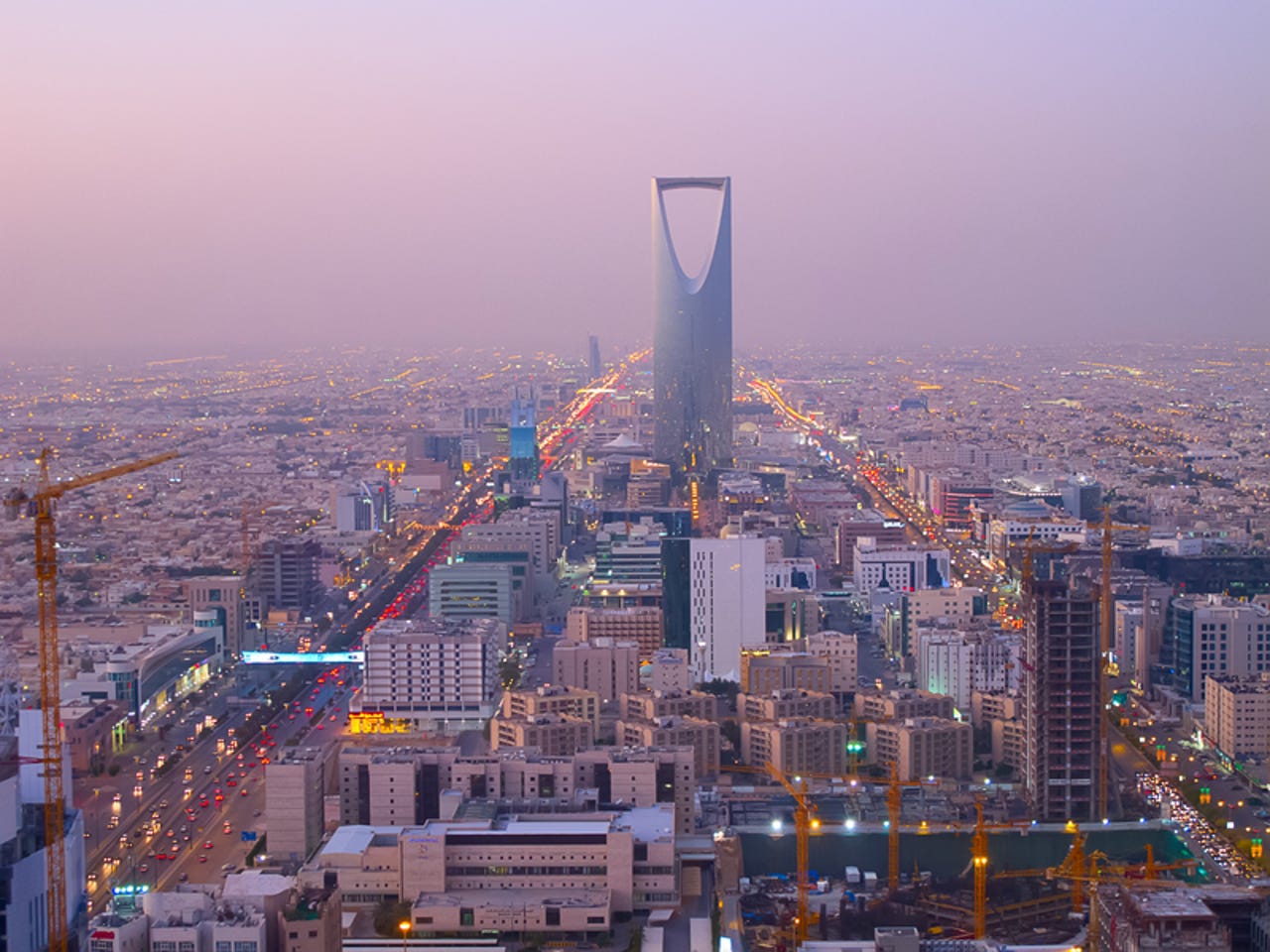Can 'oil shock' help kickstart a new tech dawn for Saudi Arabia?


The Saudi Arabian government has set out a new plan for the country's digital future.
With oil prices potentially in the doldrums for the foreseeable future, the petrochemical-dependent nations of the Gulf are looking to step up efforts to diversify their economies. For many nations, this process means moving to knowledge-based models rooted in IT, telecoms and digital services.
Countries such as the UAE and Qatar have been vocal about these goals for some time, although turning aspiration into reality has proved challenging.
Red tape, resistance to change and the security previously afforded by large oil and gas revenues have all hindered these ambitions. But, with oil prices hovering at around $30 a barrel, there is a strong fiscal incentive for change.
The impact of low oil prices is beginning to bite in Saudi Arabia. Bloomberg reported last year that the Kingdom was expected to post a $98bn budget deficit, obliging it to meet the shortfall by tapping into its reserves, issuing bonds and increasing government borrowing.
On top of those measures, it is also weighing up plans for extensive cost-cutting, with project cancellations and budget reductions.
According to the Brookings Institution, oil revenue has typically accounted for between 77 percent and 88 percent of Saudi Arabia's total income. As a result, the thinktank believes that the continued low prices represent "an economic time bomb". Data published by UNESCO suggests that Brent crude oil needs to be $93 a barrel for the Saudi government to balance its budget.
It's against this backdrop that the Saudi council of ministers has endorsed a new 2030 vision for the country. At the heart of this plan is a recognition that Saudi Arabia must "stimulate our economy and diversify our resources", with proposed remedies including the creation of the world's largest sovereign wealth fund, expansion of e-government services and a more effective harnessing of the country's "unique strategic location... [as] a global hub connecting three continents, Asia, Europe, and Africa".
In the IT and tech-fields specific commitments featured in this mammoth policy document include:
- Improved regulations and partnerships with telecom providers
- Support for local investment in telecoms and IT
- Expanded digital government services "to reduce delays and cut tedious bureaucracy"
- Establishment of an authority to support small and medium-sized enterprises through a combination of funding, partnerships, and "a greater share of national procurement and government bids"
- Increased investment in the digital economy, at home and abroad.
In addition to this, the Saudi cabinet also agreed to create a national council charged with overseeing a digital transformation of the country. One key target for this new body is to expand the provision of high-speed broadband. The 2030 Vision stipulates this provision should "exceed 90 percent housing coverage in densely-populated cities and 66 percent in other urban zones".
Data published in 2014 by the Fiber To The Home Council MENA indicated that around 1.9 million Saudi homes were able to access superfast broadband -- a figure accounts for nearly half of the 4.3 million homes in the entire region. However, with its 2015 report finding that only 18 percent of Saudi broadband subscribers had taken up FTTH, behind Qatar on 95 percent, UAE with 85 percent, and even Kuwait's 25 percent, the Saudi authorities will need to focus on takeup just as much, if not more, than availability.
Alongside these measures, the 2030 vision also outlines the need for Saudi Arabia to give its arms industries a more domestic focus, noting that "although the Kingdom is the world's third-biggest military spender, only two percent of this spending is within our Kingdom".
Addressing this imbalance, the document says, will stimulate "industrial sectors such as industrial equipment, communications and information technology, which in turn creates more job opportunities".
The creation of greater employment is especially important in a country where, according to law firm Covington, "economic growth is less than two percent per year and unemployment in the Saudi labor force stands, conservatively, at 11.6 percent. Saudi labor force participation is estimated to be just 54 percent, [with] 18 percent among women".
Among Saudi's large youth population, these problems are even more acute. Two-thirds of the population is aged under 30 years and the World Bank estimates that just under a third of them are unemployed, although the real figure may be much higher. Tackling dissatisfaction within this demographic and equipping them to be the workforce of the future are key strategic priorities.
President Obama suggested earlier this year that dissatisfaction inside their own countries was a bigger threat to states such as Saudi Arabia than Iran invading, while the 2016 ASDA's Burson-Marsteller Arab Youth survey found that less than half of all Arab youth believe they have decent prospects in the jobs market. Given this perception, a more targeted approach that supports this digitally-savvy generation makes both strategic and economic sense.
Subsequently, for the 200,000 Saudi students studying overseas, the 2030 proposals make it clear that financial support "will be steered towards prestigious international universities and be awarded in the fields that serve our national priorities". More generally, the plan indicates that "we will also focus on innovation in advanced technologies and entrepreneurship".
In taking this approach, the Saudi government arguably isn't adopting a radical new approach to IT, telecoms, and digital policy. Rather, it's choosing to reiterate, refocus and rationalize many of its previous efforts.
One area primed for a revamp are the plans designed to create four new economic cities. These efforts, beginning with the establishment of King Abdullah Economic City in 2006, "did not realize their potential", the 2030 vision says. "Work has halted in several cities," the authors acknowledge, "and others face challenges that threaten their viability." To redress this issue, the government is proposing restructuring, transferring facilities and a new improved working relationship with the companies owning these cities.
More positive starting points can be seen in plans to expand the provision of e-government. Analysis by the World Economic Forum (WEF) has highlighted successful efforts to promote ICT use across government, with Saudi Arabia ranked ninth in government promotion of ICT use in the WEF's Global Information Technology Report 2016. However, with the report also finding only 64 percent of the Saudi population use the internet regularly, this finding again suggests that the demand side is where government may need to focus.
Similar mixed messages can also be found in mobile, where the country has the third highest number of mobile subscribers in the world as a percentage of the population, but it's ranked 89th in the world in the average cost per minute of mobile calls.
And despite numerous pledges in the 2030 vision for improved research capabilities, the document falls short of specific financial commitments. "It is hard for oil-rent economies to have a strong research intensity, owing to their high GDP," UNESCO's Science Report said recently. "But by any yardstick, the 0.07 percent of GDP spent on R&D by Saudi Arabia in 2009 is low."
At this stage, it's too early to tell if Saudi's new 2030 plan will lay the foundations for a prosperous post-oil nation. But, the honest appraisal of many previous initiatives, coupled with proposals for the principles that will underpin this new economic future, shows that Saudi's leaders have a clear plan for the future.
Read more from the Middle East
- Navigating the visa minefield and the lack of women: Silicon Valley lessons from a Middle East entrepreneur
- Middle East's startup leaders: Five ways they're leading the world
- Deserts, ravines, ancient ruins: How Google's Street View is scrambling along in Indiana Jones' footsteps
- Inside Google's UAE Innovation Hub: 'Innovation is in the early days, but we see a huge appetite to learn'
- Why doesn't the Middle East shop online?